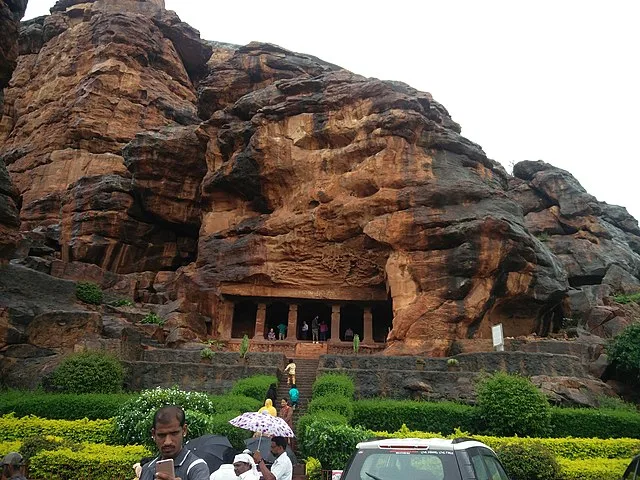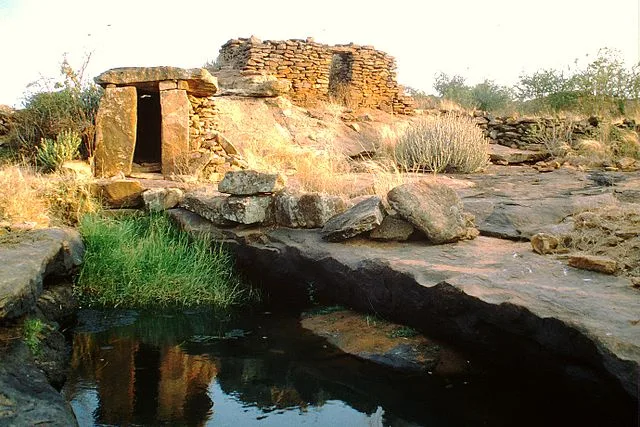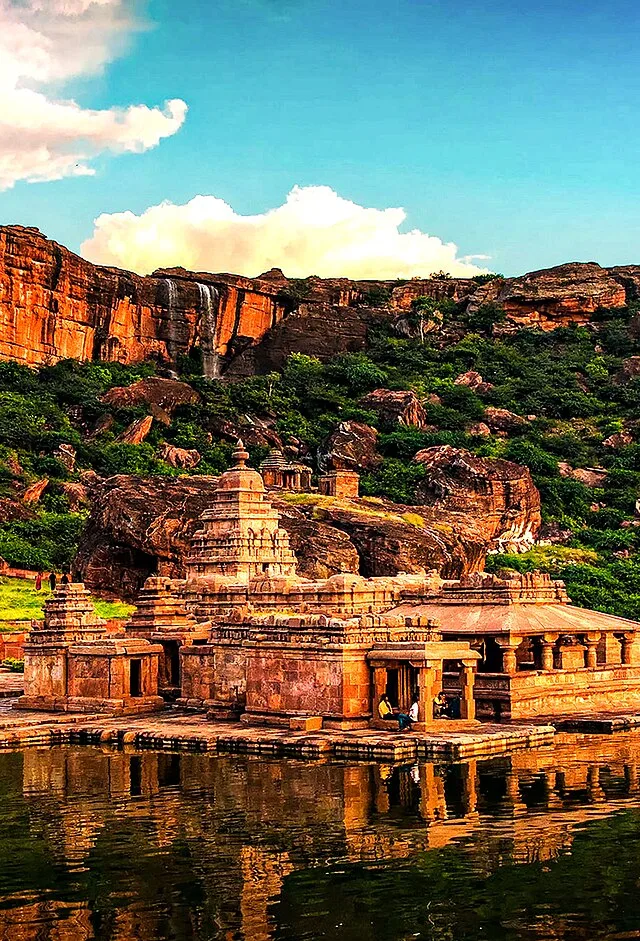Badami, also known as Vatapi, is a town located in the Bagalkot district of Karnataka, India. Nestled amidst rugged sandstone hills and picturesque surroundings, Badami stands as a testament to India’s rich cultural and architectural heritage. Let’s delve into the fascinating history, architectural marvels, and cultural significance of this ancient town.
Historical Background
Badami flourished as the capital of the Chalukya dynasty from the 6th to the 8th centuries. Its history dates back to the reign of Pulakeshin I, who established the Chalukya dynasty. Over the centuries, Badami witnessed the rise and fall of several dynasties, including the Rashtrakutas and the Vijayanagara Empire.
Architectural Marvels

Cave Temples
The highlight of Badami’s architectural splendor lies in its exquisite cave temples carved out of the sandstone cliffs. These rock-cut temples, dedicated to Hindu and Jain deities, showcase remarkable craftsmanship and intricate carvings. The four main cave temples – Cave 1, Cave 2, Cave 3, and Cave 4 – are adorned with stunning sculptures, including depictions of gods, goddesses, and mythological figures.
Fortifications
Perched atop a rugged hilltop, the Badami Fort offers panoramic views of the town and its surroundings. The fortifications, built by successive rulers, provide insights into the strategic importance of Badami throughout history.
Cultural Significance
Badami serves as a melting pot of diverse cultures and traditions. The town’s rich heritage is reflected in its festivals, music, dance, and art forms. Visitors can immerse themselves in the vibrant cultural tapestry of Badami, experiencing the warmth and hospitality of its residents.
Badami Chalukya Architecture

The Badami Chalukya style of architecture, characterized by its distinctive Dravidian and Nagara influences, has left an indelible mark on Indian architecture. The intricate carvings, structural elegance, and aesthetic appeal of Badami’s monuments continue to inspire architects and scholars alike.
Influence on Indian Architecture
The architectural legacy of Badami extends beyond its borders, influencing subsequent architectural styles across India. From temple complexes to royal palaces, echoes of Badami’s architectural grandeur can be found in various regions of the country.
Tourism and Visitor Experience
Badami attracts history enthusiasts, archaeologists, and spiritual seekers from around the globe. Visitors can explore the cave temples, trek to the Badami Fort, and wander through the ancient streets steeped in history. The town offers a unique blend of cultural immersion and architectural exploration.
Preservation Efforts

Efforts are underway to preserve and protect Badami’s architectural treasures for future generations. Conservation projects aim to maintain the structural integrity of the cave temples and fortifications while promoting sustainable tourism practices.
Nearby Attractions
Apart from its own architectural wonders, Badami serves as a gateway to other historical sites in Karnataka, including Aihole, Pattadakal, and Hampi. These UNESCO World Heritage Sites offer further insights into India’s glorious past.
Local Cuisine
No visit to Badami is complete without savoring the local cuisine. From traditional Kannada dishes to regional delicacies, the town’s culinary scene tantalizes the taste buds of visitors.
Transportation and Accessibility
Badami is well-connected by road and rail, making it easily accessible from major cities like Bangalore and Hyderabad. Visitors can also opt for guided tours or hire local transportation to explore the town and its surroundings.
Accommodation Options

A range of accommodation options, including budget hotels, guesthouses, and resorts, cater to the diverse needs of visitors. Whether seeking luxury or simplicity, travelers can find suitable lodging in and around Badami.
Best Time to Visit
The ideal time to visit Badami is during the winter months, from October to March, when the weather is pleasant for sightseeing and outdoor activities. Summers can be hot and humid, while monsoons bring occasional showers.
Tips for Visitors
- Wear comfortable clothing and footwear for exploring the cave temples and fortifications.
- Carry sufficient water and sunscreen, especially during the summer months.
- Respect the cultural and religious sentiments of the local community while visiting temples and sacred sites.
Conclusion
Badami stands as a timeless testimony to India’s glorious past, with its awe-inspiring architecture, rich cultural heritage, and captivating landscapes. As travelers embark on a journey through Badami’s storied past, they discover a treasure trove of history, art, and spirituality waiting to be explored.
Unique FAQs
Is Badami suitable for solo travelers?
Yes, Badami is a safe and welcoming destination for solo travelers. However, it’s always advisable to exercise caution and follow local customs and regulations.
What is the best time to visit Badami?
The best time to visit Badami is during the winter months, from November to February, when the weather is pleasant and ideal for sightseeing.
Are there accommodations available in Badami?
Yes, Badami offers a range of accommodations to suit every budget, including hotels, guesthouses, and homestays.
Can I hire a guide to explore Badami’s historical sites?
Yes, hiring a local guide is recommended for a more enriching experience. Guides can provide valuable insights into the history, architecture, and culture of Badami.

